[16 september] Happy Independence Day Mexico!
 •
by
•
by VampireA
General information
Population : 121 milion people (11th in the World, 2nd in North America)
Total Area : 1,964,375 km2 (13th in the World, 3rd in North America)
Oficial language : Spanish
Oficial currency : Peso(MXN)
Capital : Ciudad de México
Population density : 61 people/km2 (142nd in the World, 27th in North America)
Top 5 biggest cities : Ciudad de México, Guadalajara, Monterrey, Puebla, Toluca
A federation of 31 free and sovereign states, which form a union that exercises a degree of jurisdiction over the Federal District and other territories. Each state has its own constitution, congress, and a judiciary, and its citizens elect by direct voting a governor for a six-year term, and representatives to their respective unicameral state congresses for three-year terms.

National sport : Football
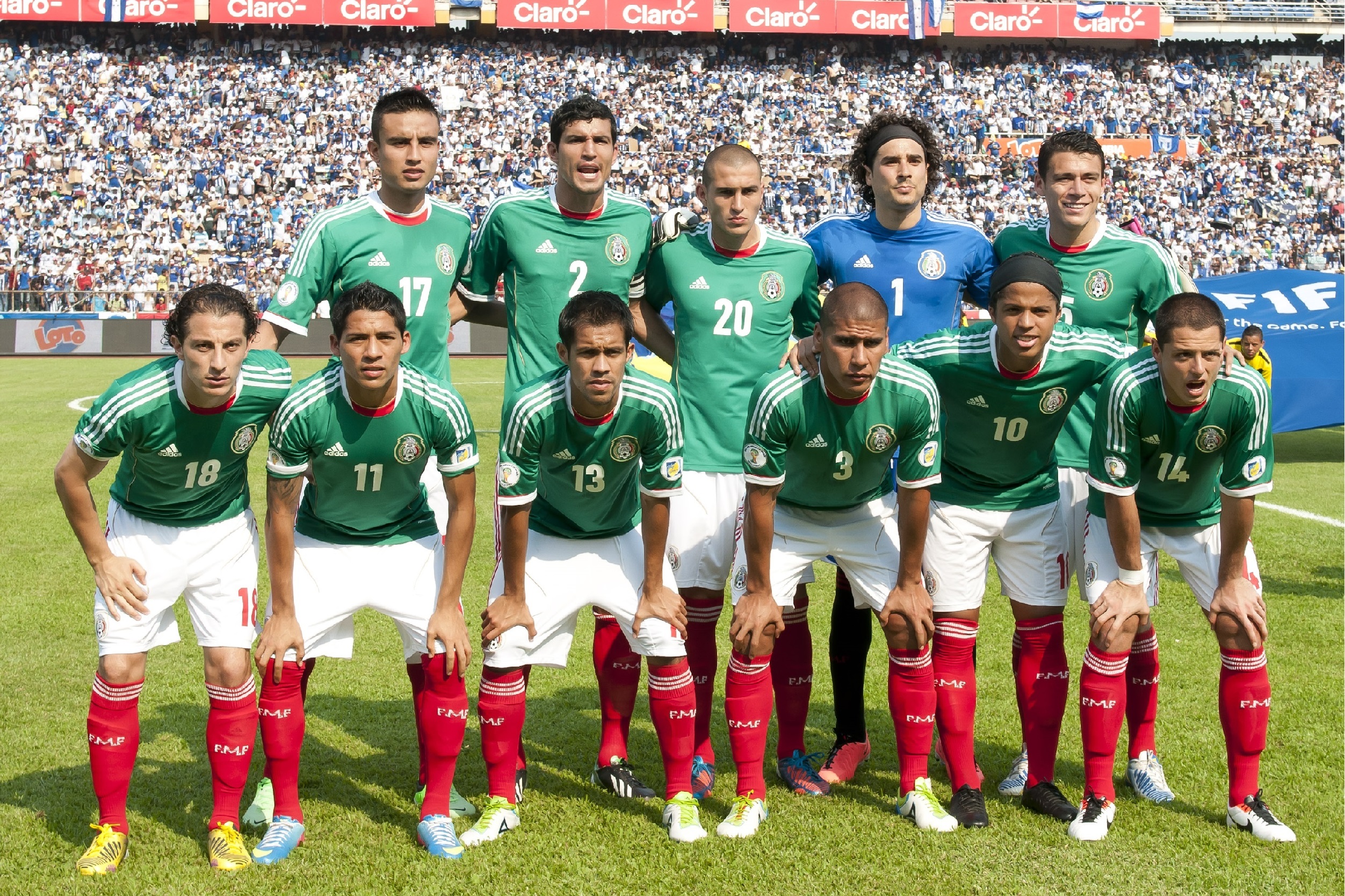
National animal : Golden eagle (Aquila chrysaetos)

Xoloitzcuintle

National plant : Dahlia

National instruments : Marimba


16 september and its semnification
Independence Day (Día de la Independencia) celebrates the day Miguel Hidalgo is believed to have made the cry of independence (El Grito de la Independencia) in the town of Dolores, in the north-central part of the Mexican state of Guanajuato. Hidalgo was one of the nation’s leaders during the War of Independence in Mexico.
There is no scholarly agreement on what was exactly said by Hidalgo, but his speech, also known as the cry of Dolores (el Grito de Dolores), was made on September 16, 1810 to motivate people to revolt against the Spanish regime rulled by Napoleon’s brother, Jose Bonaparte. Hidalgo’s army fought against the Spanish soldiers in the fight for independence, but he was captured and executed on July 30, 1811. Mexico's independence was not declared until September 28, 1821.
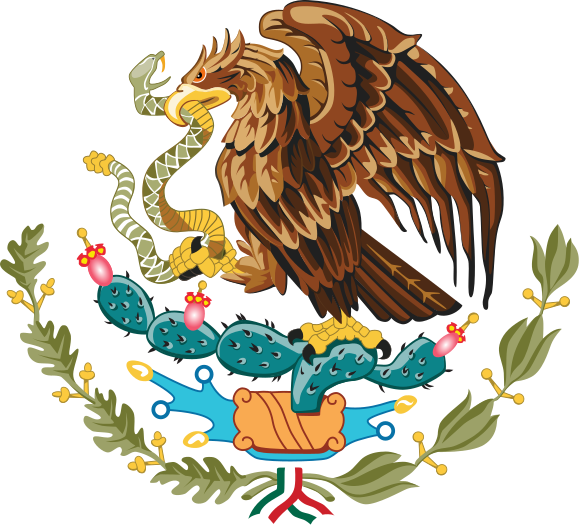
Very important note from the mexican gov :
Cinco de Mayo is not the national day of Mexico, it indeed celebrates a really unusual victory of the Mexican Army against the French (By that time they had the best army in the world under Napoleon command). I really don't know why it became so popular in the US, but I have to repeat it:
CINCO DE MAYO IS NOT MEXICO'S NATIONAL DAY.

I will try to keep the sections for legends and mythology.. only if I don’t find something interesting I will use it for other things the countries are known for.
Today we continue with one of the most known mexican traditions (at least in my opinion)
Day of the Dead (known as Día de los Muertos in Spanish) is celebrated in Mexico between October 31st and November 2nd being belived that that the gates of heaven are opened at midnight on October 31, and the spirits of all deceased children (angelitos) are allowed to reunite with their families for 24 hours. On November 2, the spirits of the adults come down to enjoy the festivities that are prepared for them.
On this holiday, Mexicans remember and honor their deceased loved ones. It's not a gloomy or morbid occasion, rather it is a festive and colorful holiday celebrating the lives of those who have passed on. Mexicans visit cemeteries, decorate the graves and spend time there, in the presence of their deceased friends and family members.They also make elaborately decorated altars (called ofrendas) in their homes to welcome the spirits.
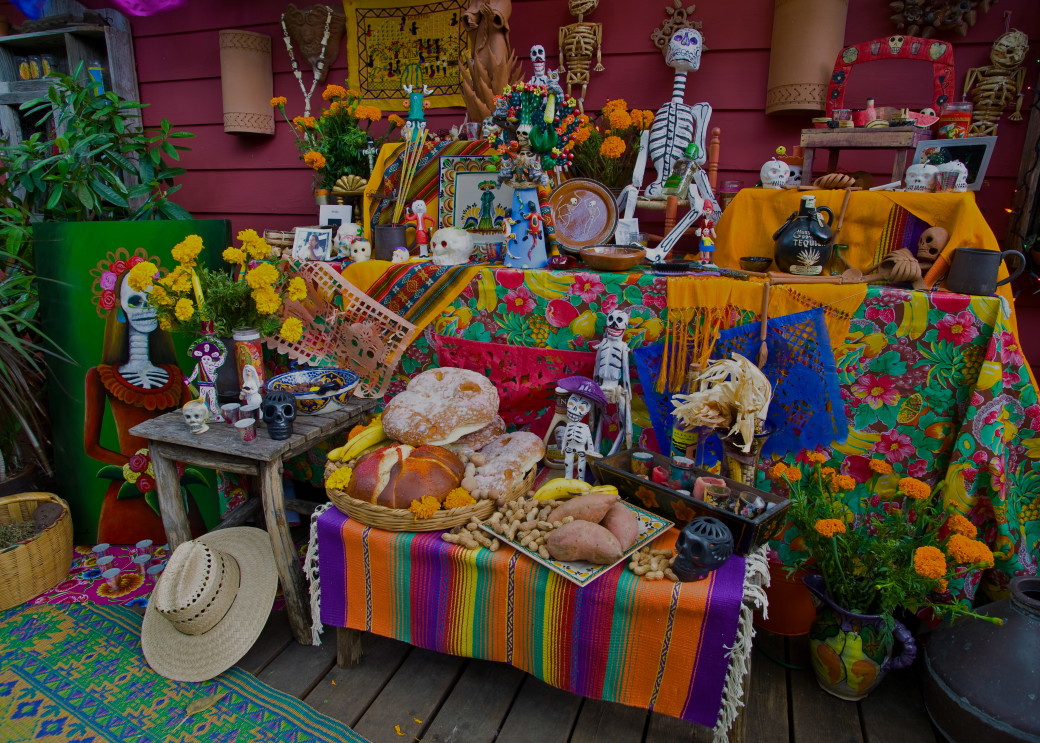
A common symbol of the holiday is the skull (in Spanish calavera), which celebrants represent in masks, called calacas (colloquial term for skeleton), and foods such as sugar or chocolate skulls, which are inscribed with the name of the recipient on the forehead. Sugar skulls can be given as gifts to both the living and the dead. Other holiday foods include pan de muerto, a sweet egg bread made in various shapes from plain rounds to skulls and rabbits, often decorated with white frosting to look like twisted bones.

Because of its importance as a defining aspect of Mexican culture and the unique aspects of the celebration which have been passed down through generations, Mexico's indigenous festivity dedicated to the dead was recognized by UNESCO as part of the intangible cultural heritage of humanity in 2008.
Hoped you also enjoyed to know a few things about this mexican tradition, I invite you to search for more information from other sources .. also waiting for mexican people to tell us more about it in the comentaries

Top 5 visited places by tourists
Riviera Maya

The Riviera Maya is a stretch of Caribbean coastline on Mexico’s northeastern Yucatán Peninsula. It's known for its numerous all-inclusive resorts, such as Bacalar, Cancun (The jewel of Mexico), Isla Mujeres, Cozumel, Tulum and Playa del Carmen.
San Cristobal de las Casas


San Cristóbal de las Casas is a highland town in the southern Mexican state of Chiapas. It’s known for its well-preserved colonial architecture, such as the centuries-old, yellow San Cristóbal Cathedral on the Parque Central.
Teotihuacan


Teotihuacan is a vast Mexican archaeological complex northeast of Mexico City. Running down the middle of the site, which was once a flourishing pre-Columbian city, is the Avenue of the Dead. It links the Temple of Quetzalcoatl, the Pyramid of the Moon and the Pyramid of the Sun, the latter two with panoramic views from their summits. Artifacts in the Museum of Teotihuacan Culture, on-site, include pottery and bones.
Puerto Vallarta


Puerto Vallarta is a resort town on Mexico’s Pacific coast, in Jalisco state. It is known for its beaches, water sports and nightlife scene. Its cobblestone center is home to the ornate Nuestra Señora de Guadalupe church, boutique shops and a range of restaurants and bars.
Chichen Itza

Chichén Itzá is a world-famous complex of Mayan ruins on Mexico's Yucatán Peninsula. A massive step pyramid known as El Castillo dominates the 6.5-sq.-km. ancient city, which thrived from around 600 A.D. to the 1200s.

Top 3 locations suggested by the locals
Celestun, Yucatan
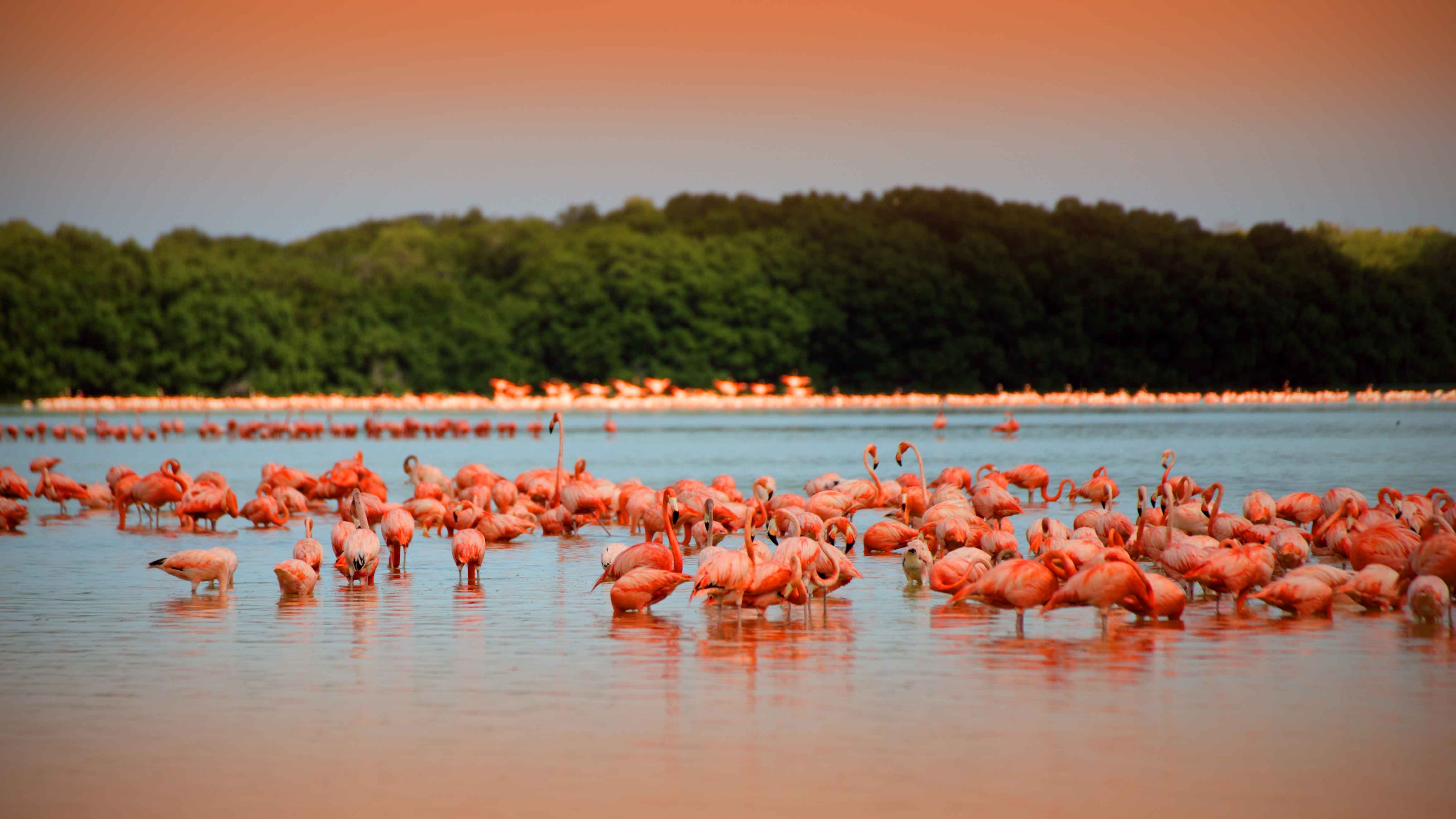
Celestún is a town in Yucatán, Mexico. It is located in the northwest corner of the state, just north of the border with the state of Campeche. Tourism is making up an increasing portion of the town's economy, as the community has many kilometers of sand beaches and abundant wildlife. Surrounding the town is the Parque Natural del Flamenco Mexicano (also known as the "Celestun Biosphere Reserve"), a wetland reserve that is the winter home to vast flocks of flamingos, as well as many herons and other bird species.
El paso de Cortes


The Paso de Cortés is the mountain pass or saddle between the Popocatépetl and Ixtaccíhuatl volcanoes in central México.
Izta-popo National Park

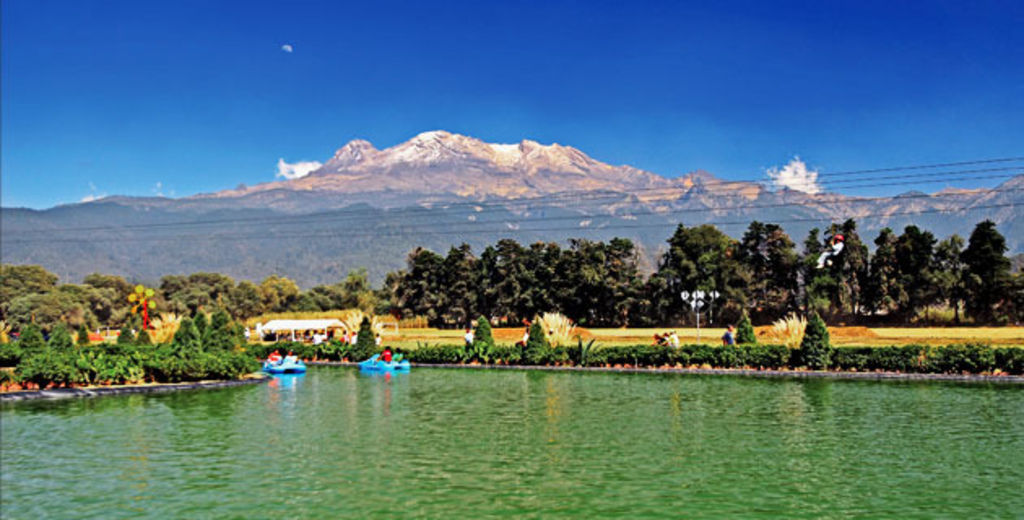
Izta-Popo Zoquiapan National Park is a high-altitude protected area in the Mexican states of México, Puebla and Morelos. Its active Popocatépetl and snow-capped Iztaccihuatl volcanoes are among the country’s highest peaks. The park is rich in native flora and fauna, including many species of fungi and the endangered volcano rabbit. Many trails offering sweeping mountain views start at Paso de Cortés pass.

Inventions Mexico gave to the world
*Color TV!

*Jet Pack!

*GNOME Linux!
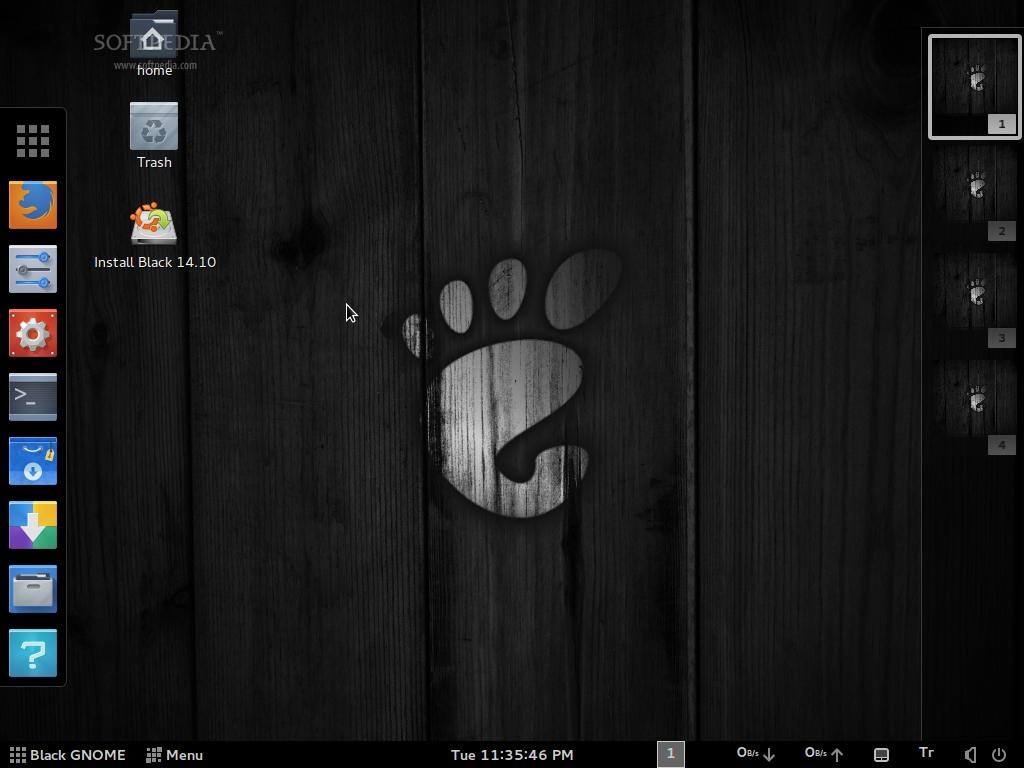
GNOME is a desktop environment composed of free and open-source software that runs on Linux and most BSD derivatives.
*Caesar salad!

*Mondragón rifle!


Famous mexican people
Manuel Sandoval Vallarta - nominated for a Nobel Prize and was recognized worldwide for helping the materialization of Quantum Physics. Due to World War II, research at MIT focused on war purposes. His work influenced the development of the Manhattan Project (aimed at creating the Atomic Bomb), observing the Universe from a physical-mathematical point of view and in the dissemination of experimentation in the Cosmos.
(1899-1977)
Guillermo González Camarena - was a electrical engineer who was the inventor of a color-wheel type of color television, and who also introduced color television to Mexico at only 23 years
(1917-1965)
Guillermo del Toro - is a film director, screenwriter, producer and novelist. In his filmmaking career, del Toro has alternated between Spanish-language dark fantasy pieces, such as the gothic horror film The Devil's Backbone (2001) and Pan's Labyrinth (2006), and more mainstream American action movies, such as the vampire superhero action film Blade II (2002), the supernatural superhero film Hellboy ([/i]2004), its sequel Hellboy II: The Golden Army (2008), and the science fiction monster film Pacific Rim (2013)
(born 1964)
Alfonso García Robles - was a diplomat and politician who, in conjunction with Sweden's Alva Myrdal, received the Nobel Peace Prize in 1982. García Robles received the peace prize as the driving force behind the Treaty of Tlatelolco, setting up a nuclear-free zone in Latin America and the Caribbean. The agreement was signed in 1967 by most states in the region, though some states took some time to ratify the agreement.
(1911-1991)
Francisco "Pancho" Villa - was a Mexican Revolutionary general and one of the most prominent figures of the Mexican Revolution.
(1878-1923)

Traditional food
Chilaquiles

Chilaquiles from the Nahuatl word chīlāquilitl is a traditional Mexican dish. Typically, corn tortillas cut in quarters and lightly fried are the basis of the dish.
Mole
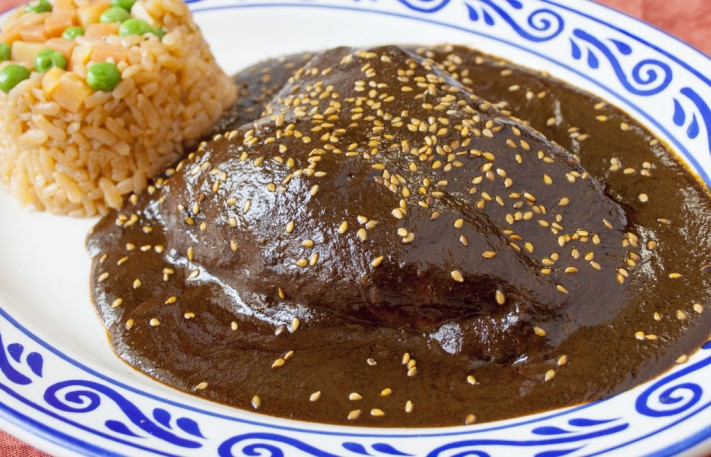
Mole is the generic name for a number of sauces originally used in Mexican cuisine, as well as for dishes based on these sauces.
Pozole
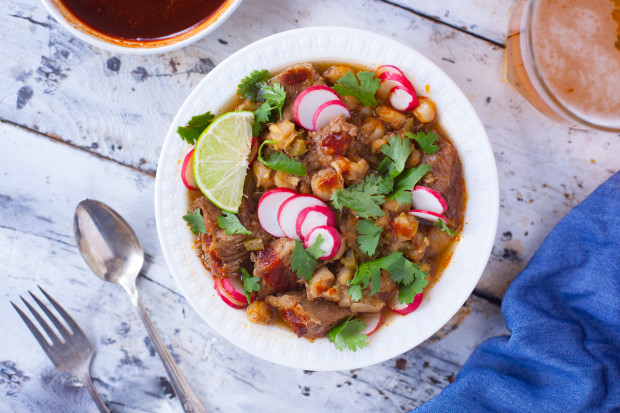
Pozole, which means "hominy", is a traditional soup or stew from Mexico, which once had ritual significance. According to research by the Instituto Nacional de Antropología e Historia (National Institute of Anthropology and History) and the Universidad Nacional Autónoma de México, on these special occasions, the meat used in the pozole was human.
After the prisoners were killed by having their hearts torn out in a ritual sacrifice, the rest of the body was chopped and cooked with maize, and the resulting meal was shared among the whole community as an act of religious communion. After the Conquest, when cannibalism was banned, pork became the staple meat as it "tasted very similar" (to human flesh), according to a Spanish priest.
Chiles en nogada

Chiles en nogada is a dish, traditionally served at room temperature with cold cream sauce, from Mexican cuisine. The name comes from the Spanish word for the walnut tree, nogal. It consists of poblano chilis filled with picadillo (a mixture usually containing shredded meat, aromatics, fruits and spices) topped with a walnut-based cream sauce, called nogada, and pomegranate seeds, giving it the three colors of the Mexican flag: green from the chili, white from the nut sauce and red from the pomegranate.
Tacos

A taco is a traditional Mexican dish composed of a corn or wheat tortilla folded or rolled around a filling.

5 interesting facts about Mexico:
1.The official name of Mexico is Estados Únidos Mexicanos (United Mexican States).
2.Mexican children do not receive presents on Christmas Day. They receive gifts on January 6, the day on which Mexicans celebrate the arrival of the Three Wise Men.
3. Mexico City is built over the ruins of a great Aztec city, Tenochtitlán. Because it is built on a lake, Mexico is sinking at a rate of 6 to 8 inches a year as pumps draw water out for the city’s growing population.
4.Snakes appear repeatedly in Mexican mythology, from the serpent god Kukulcan which can be found the side of the Chichen Itza pyramid to the feathered serpent god, Quetzalcoatl.
5.The largest pyramid in the world is the Great Pyramid of Cholula in Mexico. It is also the largest monument ever constructed in the world.

My 5 words when I hear about Mexico:
#tacos,#Cancun,#GoldenEagle,#pyramids,#aztecs
What are your 5?

Special thanks to Lalo292 and 4NG3L PR0GR4MM3R , and message for the comunity:
“Bueno, como soy el MoFA no tengo mucho que decir sobre mi puesto, pero si puedo decirles que espero que disfruten las fiestas patrias y celebren otro grito por nuestra independencia nacional. También quiero decirles que tenemos que mantenernos unidos, en especial después del terremoto y los huracanes que azotaron a México, y darle nuestro apoyo a los que perdieron sus casa por estos desastres...!”
“Well, I'm the MoFA so I really don't have much to say about my office but I can say to my fellow mexicans that I really hope they enjoy the holidays and celebrate again another year of our independency. Also I must say we have to remain together, especially after the earthquake and hurricanes we suffered a few days ago, and give all our support to our brothers who lost their homes in Chiapas, Oaxaca and Veracruz.
The best attribute of us, mexicans, is our solidarity, so let's keep it that way and help anyone who needs it, even if it's from the US.”
Waiting for feedback , coments , opinions and if there is anyone that thinks I missed something , I could do something better or just wants to help me with this project , PM me !
Special thanks to Kariky for the spacers !!
Hope you enjoyed and see you next time!
P.S. Article 11/74!











P.S.2. Don't forget to push that flags !


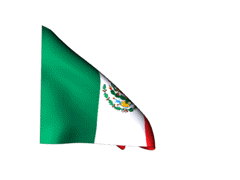
Comments
Happy Independence Day Mexico!
myeahh.....right
My 5 words when I hear about Mexico:
#tacos,#Cancun,#GoldenEagle,#pyramids,#aztecs
more like
#cocaine#Banderas#SalmaHayek#ElChapo#Tacos
good article nonetheless
definitely made me think of visiting Mexico
Everyone has other things that come in mind 🙂
Happy Independence Day Mexico! 🙂
Amazing work.... again!
o/
Viva la Mexico!!
Am fost acolo ☺
Happy Independence Day Mexico!
Happy Independence Day Mexico!
Ahora tengo hambre.
Happy Independence Day Mexico!
o7!
https://www.romper.com/p/how-to-help-mexico-earthquake-victims-as-the-country-struggles-to-recover-2305644
Viva la Mexico! I wish you guys to take back territories which Americans took from you one day!
never muajajajaja
Very Good publication O7 thank you
VIVA MEXICO CABRONES!!!!!!!!!!!!!!!!!
VIVA MÉXICO PUTOS
Beautiful 🤗😇
Thank you
Nice...
Viva Mexico o/
votado!
Nice
Gran articulo 😃
🙂
3rd porque USA les robo territorio , sino eran 1st en NorthAmerica